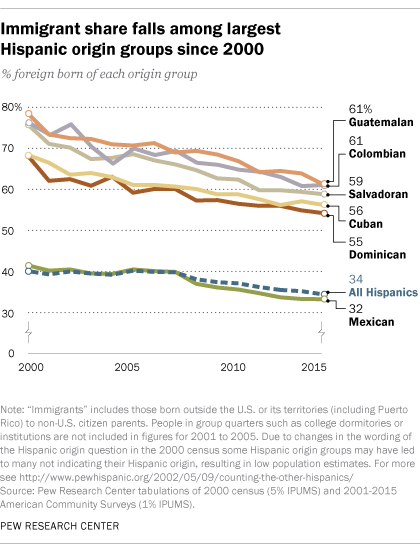The Latino population in the US has sextupled itself since 1970.
OK. The new Latino generation is out there. It primarily speaks English but supposedly 'feels' Latin (according to many published studies). Why then, isn't it buying the alternative, edgier Latin music that should appeal to it? Perhaps because it's in Spanish. Whoever resolves this riddle will make a bundle. (Billboard, 2004)
Clubbing in the Underground: Freestyle and Hi-NRG
In New York, Los Angeles, and Chicago, Latinos played a central role in the formation of disco and its hip-hop- and electro-influenced successors in the late 1980s and early 990s. At the time, Latinos, making the post-disco, post-hip hop music called freestyle or Hi-NRG, which was basically an early electronic dance music. Some musicians, like Lisa Lisa and Cult Jam would do fairly well.
(This is the scene that Madonna would eventually emerge from. It's also worth noting the seminal importance of queer Latinx folk in the making of modern dance music, as dramatized in the 2018 series Pose. The gay discos of black and brown NYC also birthed voguing, which Madonna celebrated/ripped off).
Back on the pop charts
A less underground, poppier alternative emerged from Miami in the 1980s, in the person of Miami-based Gloria Estefan and Miami Sound Machine, headed by Gloria's husband Emilio Estefan. Originally only singing in Spanish and marketed only to Latin Americans, Estefan's music. Conga was a direct predecessor to the turn-of-the-millenium Latin Boom, but also helped establish EMilio Estefan in Miami as a major broker of a growing music industry tie-together of US Latino and Latin American markets.
Salsa moderna
RMM records, which took up the mantle of New York and Puerto Rican salsa after the decline of Fania, aimed at a particularly modern, bicultural sound. Producer Sergio George took up young Nuyorican singers who had dedicated themselves to freestyle music, like La India and Marc Anthony, and get them to sing a new, youthful brand of salsa (see also DLG and Proyecto Uno).
By 2004, the music industry had found a new(-ish) genre capable of being marketed to young people across the hemisphere: reggaetón.
With ongoing migration and return migration between the US and Puerto Rico, and people sending mix tapes back and forth, there was already a rap scene in Spanish in the 1980s in Puerto Rico. The pioneering Vico C, whose ghetto philosopher tales of street life made him one of the best known from that place and time.
In the 1990s, New York hip hop, and subsequently Puerto Rican hip hop, was also increasingly influenced by Jamaican dancehall reggae. In New York, a significant portion of the black population, especially in Brooklyn, is of Jamaican, Trinidadian, and other West Indian/Caribbean ancestry, including some seminal figures in hip hop: Kool DJ Herc, Notorious BIG, KRS-One, Slick Rick, Busta Rhymes, Li'l Kim, Foxy Brown, and others.
Dancehall/reggae and rap use different beats (as Marshall helpfully shows us). Hip hop is based on the so-called "boom bap," which rendered graphically, would look something like this.

Much dancehall, and reggaetón, uses the habanera-based rhythm of the Shabba Ranks song "Dem Bow" (1991) (covered by El General in Panama). The song and its riddim is basically a tresillo rhythm superimposed over a straight four count - that is, a habanera.

First however, a scene emerged in Puerto Rico associated with the Afro-Puerto Rican underclass of the island's housing projects or caseríos - usually called underground or melaza. This music was released in mixtapes. Here, none other than Vico C explains that the same artists rapped over both hip hop and the Dem Bow beat that would become reggaetón:
By the turn of the millennium, the conversion of underground/melaza into reggaetón begins (although no one knew it yet). Free and easily downloadable beat-making programs became available online, making it possible for this with access to computers and the internet able to make beats. One of the most important was the free program Fruity Loops (now "FL Studio"). By the time of his 1999 mixtape, Playero 41, DJ Playero's beats (as on "Todas las yales" with Daddy Yankee) were almost entirely synthesized rather than sampled (and heavily influenced by techno music), although the music still featured shifts between dembow and hiphop beats. By 2000, the predominant beat was a Puerto Rican version of Dem Bow featuring bass drops and a syncopated synthesized timbal.

The Puerto Rican underground scene also inspired Francisco "Luny" Saldana and Victor "Tunes" Cabrera, two Dominican-born DJs from the unlikely setting of Peabody, Massachusetts, a suburb with a mostly white population, who cooked up beats after work as cook and dishwasher at a Harvard University residence house. The beats made by the two were sleek and pop-friendly, beginning with their 2003 "Quiero saber" track with Ivy Queen.








No comments:
Post a Comment